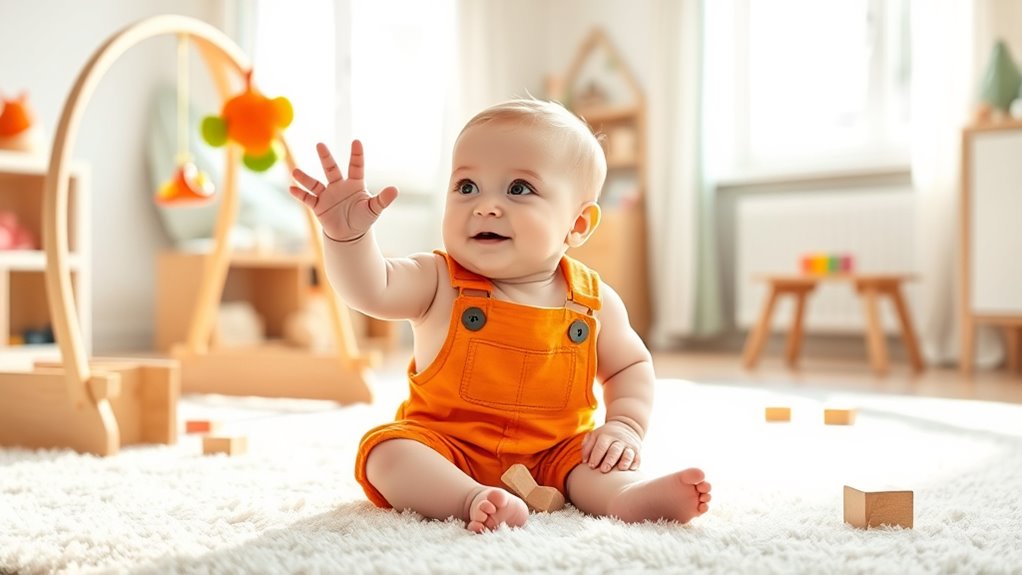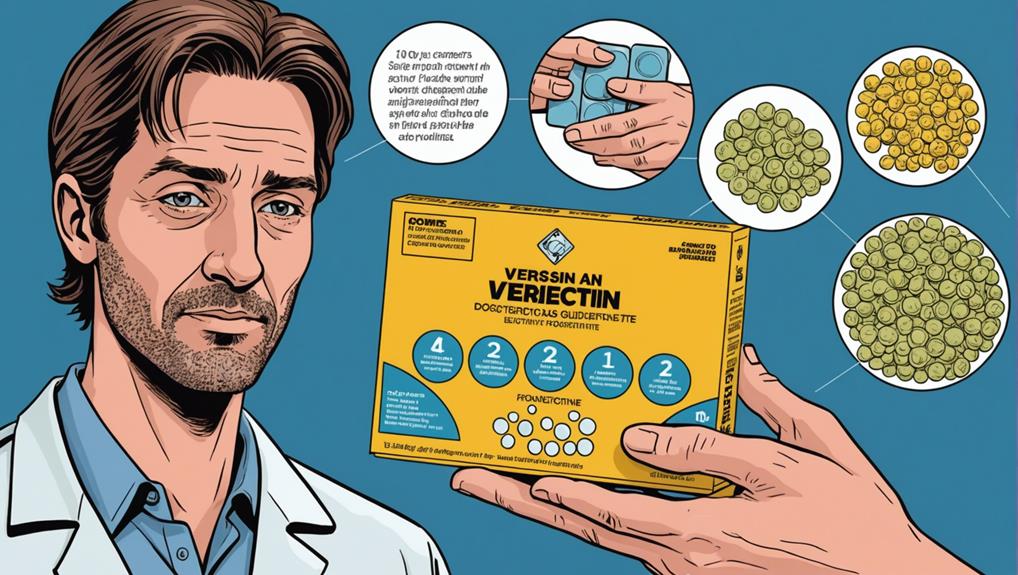Between 7 and 9 months, your baby gains steady sitting, crawling, and pulling up, showing improved strength and coordination. Their curiosity blossoms as they reach for new objects, explore textures, and imitate gestures, driven by their increasing motor skills. You can support their growth by creating a safe environment filled with sensory toys and encouraging exploration through interaction. Keep exploring these milestones further to see how their confidence and skills will continue to develop.
Key Takeaways
- Babies begin to sit steadily, crawl, or pull up to stand, enhancing their mobility and independence.
- Hand-eye coordination improves, allowing precise picking up of toys and exploring objects.
- Increased curiosity leads to reaching for new objects, mouthing toys, and examining textures.
- Exploration behaviors include turning over items, grasping objects beyond reach, and sensory investigation.
- Supportive activities and safe environments foster confidence, sensory development, and active exploration.
Key Motor Skills During This Stage
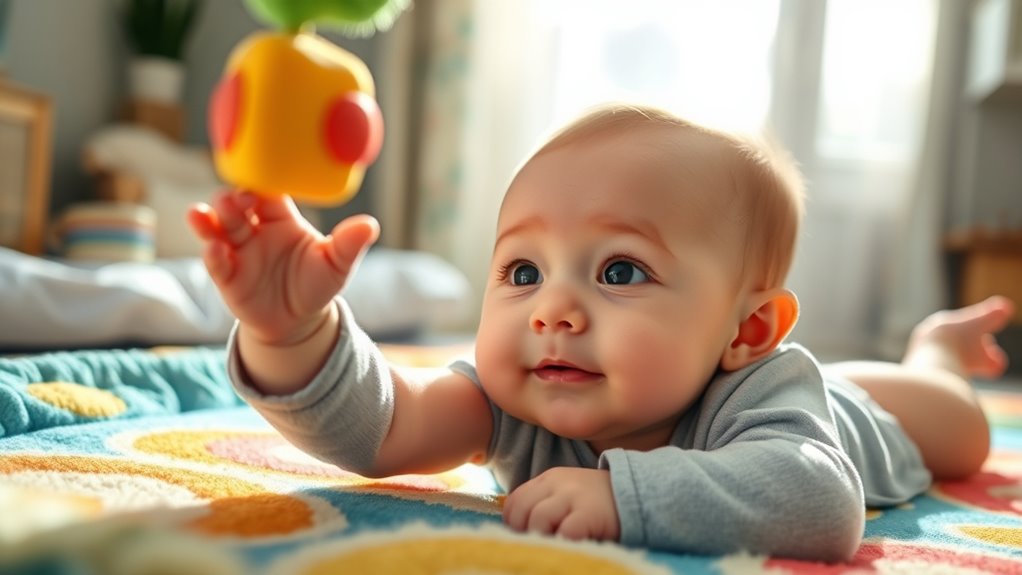
During the 7-9 month stage, your baby begins to refine their motor skills considerably. You’ll notice improvements in both gross motor and fine motor abilities. With gross motor skills, your baby may start to sit steadily without support, crawl, or even pull up to stand. They’re gaining strength and coordination, enabling more exploration. On the fine motor side, your little one is improving dexterity—pinching small objects, transferring items between hands, and practicing controlled movements. Their hand-eye coordination sharpens, allowing them to pick up toys or food with greater precision. These milestones show your baby’s growing confidence and independence as they learn to control their muscles for a variety of movements. Supporting these skills with safe play encourages continued development and curiosity. Additionally, understanding the importance of color accuracy and contrast ratio can help caregivers create optimal environments that stimulate visual development and curiosity.
Signs of Growing Curiosity and Exploration
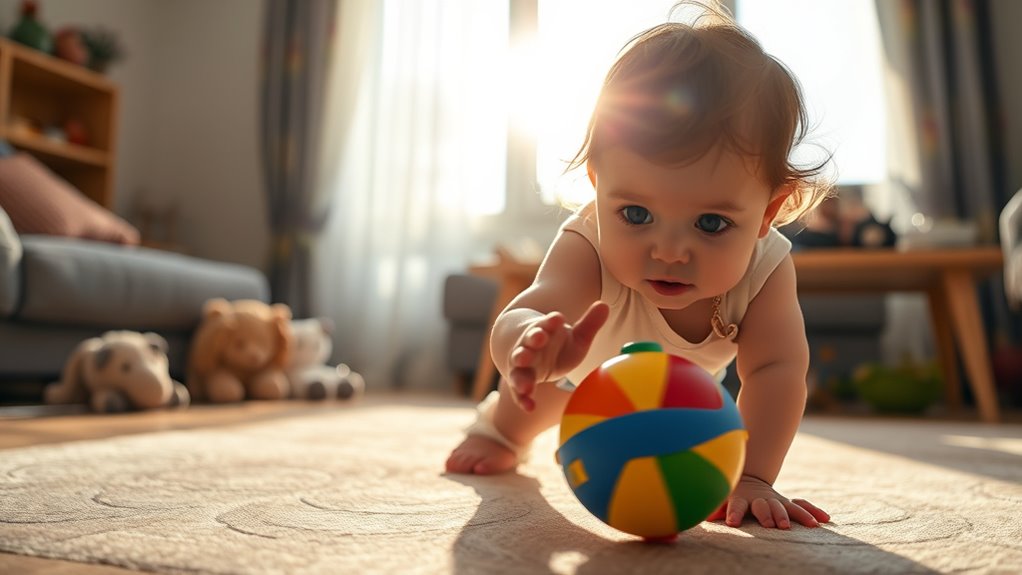
As your baby reaches 7 to 9 months, their natural curiosity and desire to explore become more evident. You’ll notice exploration behaviors like reaching for new objects, turning over items to see what’s underneath, or trying to grasp things beyond their immediate reach. They may also engage in sensory investigations, such as mouthing toys, feeling textures, or examining objects closely. These actions help them understand their environment and develop their senses. Your baby might also watch you intently, imitate gestures, or track moving objects with focus. Additionally, their increased motor skills enable them to explore more actively and confidently. The desire to learn and explore is often fueled by powerful persuasive words they observe in their environment, which encourage curiosity and interaction. These signs of growing curiosity show they’re enthusiastic to learn and interact with the world around them. Encouraging safe exploration supports their development and nurturing their inquisitive nature. Recognizing and fostering their exploratory behavior helps build their confidence and curiosity further.
Tips to Support Your Baby’s Development
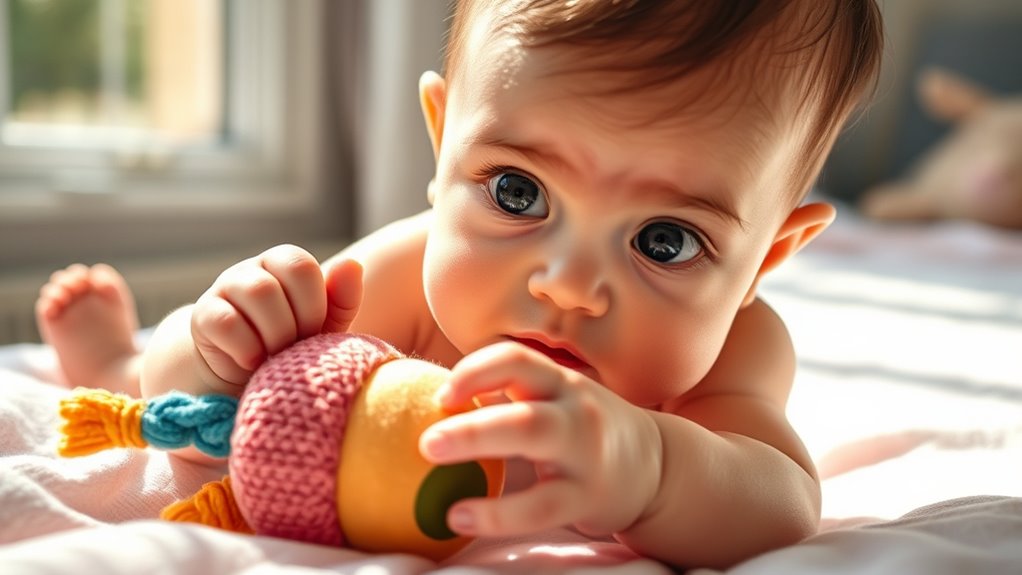
Supporting your baby’s development at this stage involves creating a safe and stimulating environment that encourages exploration. Incorporate sensory play by offering textured toys, soft fabrics, and objects with different sounds to enhance their senses. These activities help your baby discover new sensations and build their curiosity. Engage in frequent social interaction, talking, smiling, and responding to their cues, which fosters emotional security and communication skills. Encourage your baby to explore their surroundings, but always supervise to guarantee safety. Simple activities like stacking blocks or introducing mirrors can boost curiosity and motor skills. Being attentive to your baby’s reactions can also help identify developmental milestones and guide your interactions. Creating a stimulating environment is essential for fostering curiosity and learning during this exciting stage. Incorporating age-appropriate toys can further stimulate their senses and promote cognitive growth. Remember, your encouragement and involvement are essential in nurturing their confidence and development during this exciting stage.
Frequently Asked Questions
How Can I Tell if My Baby’s Development Is on Track?
You can tell if your baby’s development is on track by observing their motor skills and cognitive development. If they’re reaching milestones like sitting, crawling, or grabbing objects, that’s a good sign. Pay attention to their curiosity, problem-solving, and how they interact with you. If you notice delays or concerns, consult your pediatrician. They can assess if your baby’s growth aligns with typical developmental patterns and offer guidance.
Are There Specific Toys That Encourage Mobility and Curiosity?
You can encourage your baby’s mobility and curiosity with tummy time toys and sensory play items. Look for colorful, simple toys that motivate your baby to reach, grasp, and explore during tummy time. Sensory play toys with different textures, sounds, and shapes stimulate curiosity and promote movement. These toys help your baby develop motor skills and curiosity naturally while making playtime engaging and fun.
What Are Common Challenges During This Developmental Stage?
Think of this stage as a wild jungle gym where challenges lurk around every corner. You might face motor skill delays that make your little explorer hesitant, or curiosity frustrations that cause tears instead of giggles. It’s common to feel like progress is a slow crawl rather than a leap. Patience becomes your best tool, helping your child conquer these hurdles at their own pace, transforming frustration into newfound confidence.
How Does Sleep Impact My Baby’s Growth and Exploration?
Sleep plays a vital role in your baby’s growth and exploration. Consistent sleep patterns and well-established nap routines help your baby recharge, making them more active and curious during the day. When your baby gets enough rest, they’re better equipped to develop motor skills, explore their surroundings, and learn new things. Inadequate sleep can lead to fussiness and hinder their natural curiosity and mobility.
When Should I Consult a Pediatrician About Developmental Concerns?
If your baby isn’t reaching milestones like crawling by 9 months or shows limited curiosity, you should consult a pediatrician. Early intervention and developmental screening are vital for addressing concerns promptly. For example, a parent noticed her baby wasn’t babbling by 12 months; early evaluation helped identify hearing issues. Don’t wait—trust your instincts and seek professional advice to support your child’s growth and development.
Conclusion
At 7–9 months, your baby is discovering movement, exploring their surroundings, and building curiosity. By encouraging their curiosity, supporting their mobility, and celebrating their progress, you help foster confidence, independence, and joy. Keep engaging, keep exploring, and keep nurturing their growth. As they reach new milestones, remember that every step is a sign of their incredible development. Embrace the journey, enjoy the moments, and watch your little one thrive with each new discovery.
